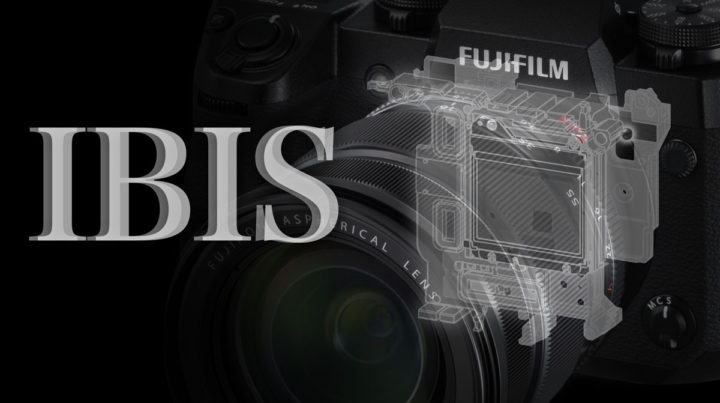Fujifilm X-H1 Development Story #7 – In Body Image Stabilization Explained

Fujifilm X-H1 IBIS Development
The 7th epsiode of the Fujifilm X-H1 development story is a highly awaited one: the development of IBIS.
And right at the start they adress one of the big questions: how does it come that in 2016 Fujifilm managers said IBIS is not compatible with X-mount, and now we have the X-H1?
The question has already been answered by Billy in a fantastic TCSTV X-H1 live stream. And now fujifilm-x confirms:
“We said in the past that there will not be an IBIS for the X Mount. We’ve said that because back then having IBIS meant compromises on the image quality. But now we need to correct the statement. The X-H1 has IBIS. We now have developed one that works without compromising on the image quality.”
As Billy told us, in order not to lose image quality and to be super precise, the whole IBIS mechanism has to be bigger compared to the one of other camera manufacturers. Billy (as well as other managers), also said that the current IBIS can’t fit into smaller bodies, but in future, with further development of their IBIS tech, they might be able to put IBIS into smaller bodies.
For now, though, the Fujifilm X-T3 is rumored not to have IBIS.
Now back to the IBIS development story.
Fujifilm says:
“What makes an IBIS good? Precision is the key to make a good IBIS. The depth of field varies on the focal length, but generally speaking it is shallower than 5 microns for the light rays of F1.4. The image can get blurry when it is off just by 1 micron. The XF lenses have characteristics of clear separation between focal plane and defocus area. So the XF lenses will not be able to deliver its best optical performance if the focal plane is tilted even just by a tiny bit. The precision is needed to deliver the best result.
[…] In order to stabilize the image, the sensor surface tilts in pitch and yaw direction. To have IBIS that works, the precise position adjustment of the sensor surface is required for all the movement that IBIS commands.
[…] First is the design. The IBIS can be broken down to 3 major parts: base, joint, and sensor part with coil.

And there is more. The joint, which is shaped like a ball, is placed on the surface of the base. In order for the ball to move smoothly, the surface of the base also needs to be smooth.
However the problem is that the base plate is made of magnesium alloy and is not smooth enough even when polished. To work out the problem, we combined it with a mirror-finish stainless plate.

The stainless plate has the value of Ra0.05. Ra is the measurement for smoothness, meaning the average unevenness of the surface is maintained under 0.05 micron.The joint is also special. It is made of durable ceramic that is tough against deformation. The diameter of the ball is 1,500 micron and the manufacturing tolerance is ±0.3% (less than 5 microns).

And the positioning of the sensor surface. The sensor surface needs to be adjusted in quickness and with precision. The key to the fast and accurate positioning is the torque. If the actuator lacks power, then it can probably handle positioning of the sensor. It cannot guarantee quick and precise positioni
The actuator of the IBIS unit in the X-H1 is quite big. It is double the size of a typical unit for the APS sensor. But it means that this is twice as much powerful.
During the course of the development, the developing team had accidentally set the speed of the vibration generator to the double of what it should have been. All the camera models failed the test and could not cancel the blur with the exception of the X-H1. The X-H1 was still able to cancel the blur. It is unlikely that a vibration at such high speed will happen in real life, but the accident reassured the team that the higher torque has advantage to increase the performance of the IBIS.

Lastly, the precision is made during the course of the manufacturing. It would be pointless to have a design and parts that cannot be realized for production.
The precision is achieved within 1 micron difference. Watch the video below to see how the IBIS works.
Read more at fujifilm-x
Fujifilm X-H1: BHphoto, AmazonUS, Adorama, Focuscamera
Follow FujiRumors on Facebook, RSS-feed, Instagram, Youtube and Twitter
Fujifilm X-H1 Coverage: X-H1 facebook group + X-H1 facebook Page
- X-H1 Development Story #1: The Re-inforced Frame
- X-H1 Development Story #2: Heat Dissipation, IBIS and Shutter Shock Reduction
- X-H1 Development Story #3: Weather Sealing and Super Coating
- X-H1 Development Story #4: Film Simulation ETERNA, or The Art of Omission
- X-H1 Development Story #5: Can ETERNA be Used for Still Photos?
- X-H1 Develompent Story #6: Autofocus
- X-H1 Develompent Story #7: IBIS

